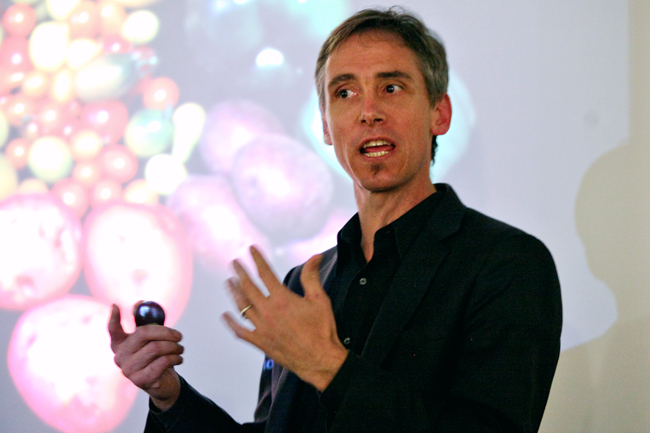Hot wings are a college game day staple, but students don’t often question what brings the heat. Visiting natural history professor Joshua Tewksbury spoke Monday on why chilli peppers are so hot.
Tewksbury said the main component to the heat when eating chili peppers is the capsaicin, which is a type of capsaicinoid. According to Tewksbury, heat in peppers is determined by genetics.
“Capsaicin is the active ingredient that makes chilies hot. There are about 30 orthologs called ‘capsaicinoids,’ two of which we respond to,”
Tewksbury said.
A chemical ecologist by trade, Tewksbury said that chemistry is not so essential to his work of understanding why chilies are hot.
“You don’t have to be a true chemist to do this work. … I’m an ecologist first and a chemist because that’s where my questions have led me,” he said.
Biology assistant professor Shalene Jha said the chemical ecology aspect of plant species and how they interact with one another relates to the development of a protection mechanism in the plants, which occurs over time. In the case of chilies, the protection mechanism is the heat-producing capsaicinoids.
“Chemistry governs or is extremely important for species interactions, so, whether you’re talking about insects chewing on plant tissue or poking their little mouth parts into berries, chemistry dictates a lot of what happens and what can happen,” Jha said. “When people talk about chemical ecology, especially when it’s related to a defense compound like a plant defense or herbivory predation to their seeds, it’s costly to [plants] to produce this weapon.”
Haldre Rogers, ecology and evolutionary biology faculty fellow at Rice University, said her research in the spread of seeds by birds shows another way in which plants ensure the continuation of their species. Dispersion of seeds, such as production of capsaicin, is a protection mechanism.
“The research that I do also looks at the role of seed dispersal by birds in plant populations,” Rogers said. “The similarity is that, in both [chemistry and ecology] systems, there are a multitude of ecological interactions happening and to figure out which ones are the most significant for determining the plant population and what’s going on with the plant population.”
Tewksbury noted that, while capsaicin doesn’t prevent human consumption of chilies, the protection mechanism is effective in most cases.
“We are the only mammals I’ve ever seen that eat chilies,” Tewksbury said.





















